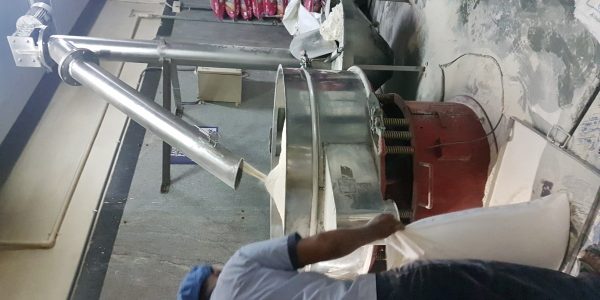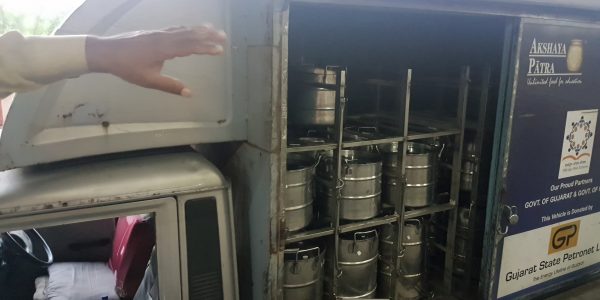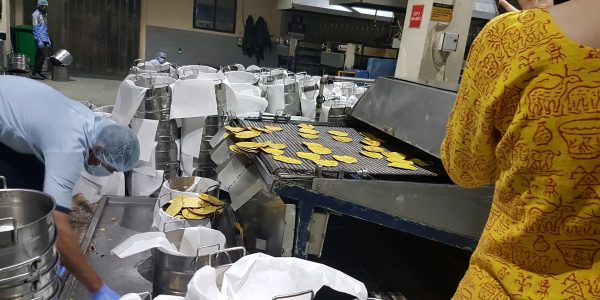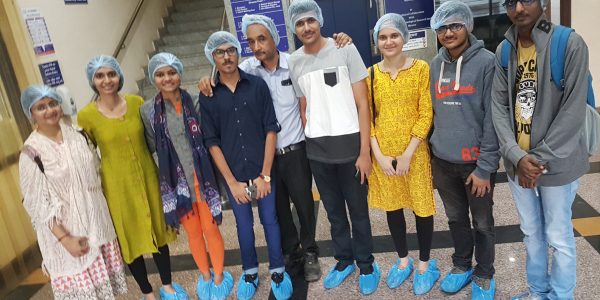IEEE Sensors Council Chapter Events
- Technical talks
- Industrial visit
- Workshop
Technical Talks
Inaugural Talk of the Chapter
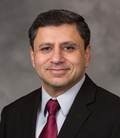 1. Speaker: Prof. Yogesh Gianchandani
1. Speaker: Prof. Yogesh Gianchandani
Affiliation: University of Michigan
Bio: Yogesh B. Gianchandani is a Professor at the University of Michigan, Ann Arbor, with a primary appointment in the Electrical Engineering and Computer Science Department and a courtesy appointment in the Mechanical Engineering Department. He also serves as the Director for the Center for Wireless Integrated MicroSensing and Systems (WIMS2).
Dr. Gianchandani’s research interests include all aspects of design, fabrication, and packaging of micromachined sensors and actuators (http://www.eecs.umich.edu/~yogesh/). He has graduated over 30 Ph.D. students, and contributed to over 45 US patents and over 300 papers in journals and conferences. He was a Chief Co-Editor of Comprehensive Microsystems: Fundamentals, Technology, and Applications, published in 2008, and he serves on the editorial boards and program committees of a number of journals and conferences. From 2007 to 2009 he also served at the National Science Foundation, as the program director for Micro and Nano Systems within the Electrical, Communication, and Cyber Systems Division (ECCS). Dr. Gianchandani is a Fellow of IEEE.
Title of the talk: Microfabricated gas pumps for micro gas chromatography and other applications
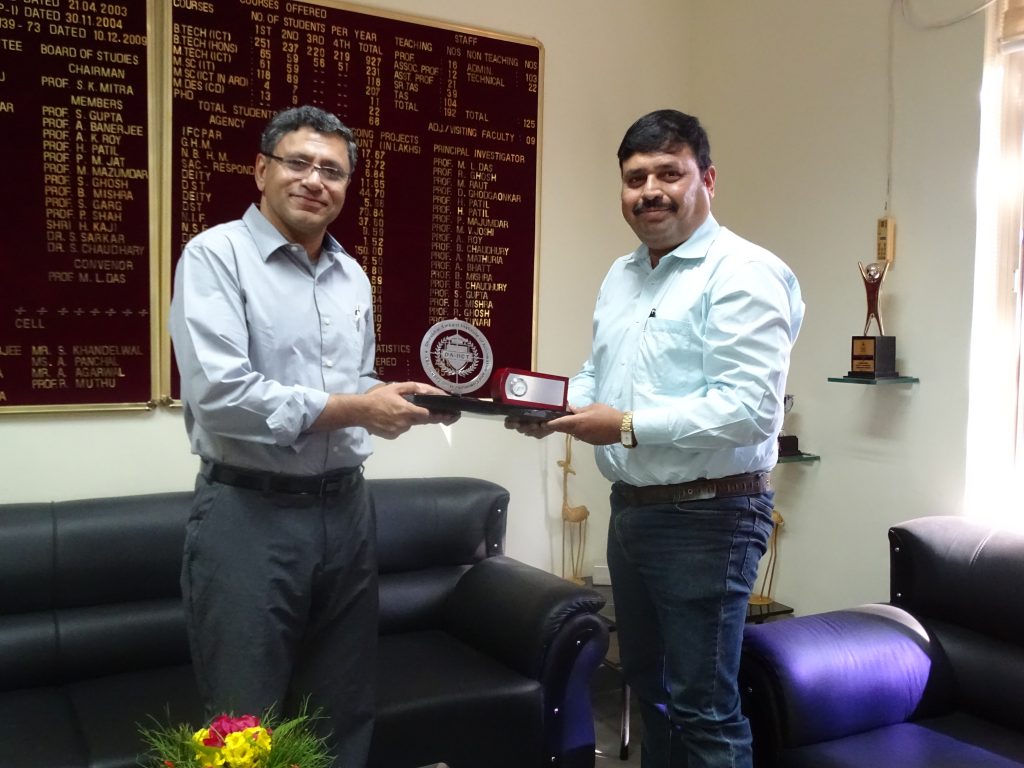
Abstract: An enduring challenge for chip-scale gas chromatographs has been the integration of pumps and valves that are necessary to handle analyte samples. Microscale pumps have been studied for more than two decades, and successful pumping has been reported for gas phase fluids. A common approach has been to use membrane actuation. In recent years, it has been shown that motionless gas pumps that are based on thermal transpiration – specifically, Knudsen pumps (KPs) – are effective for both vacuum and high-flow applications when appropriately configured. Being motionless, KPs are silent and highly reliable. This presentation will describe how lithographic manufacturing methods may be used for high flow Knudsen pumps. It will also describe an example of how the architecture of micro gas chromatographs can be adapted to incorporate KPs. In this example a fully microfabricated system is used to evaluate a mixture of volatile organic compounds that includes benzene, toluene, and xylene.
This research is performed in the context of the University of Michigan Center for Wireless Integrated MicroSensing and Systems (WIMS2). This multi-disciplinary Center currently includes about 35 faculty, and 100 PhD students and postdoctoral scholars. The Center brings together research in core technologies such as MEMS, micropower circuits, and RF technology, to facilitate microsystems for healthcare, environmental monitoring, and infrastructure monitoring.
Date: 1 Feb 2017
Venue: DA-IICT, Gandhinagar
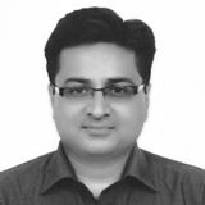 2. Speaker: Manoj Saxena
2. Speaker: Manoj Saxena
Affiliation: DL and Regional Editor of IEEE EDS south Asia
Bio: Manoj Saxena is currently Associate Professor in Department of Electronics, Deen Dayal Upadhyaya College, University of Delhi, New Delhi, India. He received B.Sc. (with honors), M. Sc., and Ph.D. degrees from the University of Delhi in 1998, 2000, and 2006 respectively. He has authored or coauthored 210 technical papers in international journals and various international and national conferences. His current research interests are in the areas of analytical modeling, design, and simulation of non classical MOSFET architectures like silicon-on-nothing, insulated-shallow-extension, grooved/concave-gate, cylindrical gate and Tunnel FET. He is reviewer to many journals including Solid State Electronics, Journal of Physics: D Applied Physics and IEEE TED and EDL. He is Senior Member of IEEE and also Member of Institute of Physics (UK), Institution of Engineering and Technology (UK), National Academy of Sciences India (NASI), Associate of Indian Academy of Sciences, Bangalore member of International Association of Engineers (Hong Kong). Currently, he is Regional Editor for South Asia, IEEE EDS Newsletter; IEEE Electron Device Society-Region 10 SRC Vice Chair and EDS Distinguished Lecturer and Fellow-IETE, India. For his voluntary contribution, he has received the outstanding EDS Volunteer recognition from EDS Chapters in the region in 2012.
Title of the talk: Fundamental Insights into Channel and Gate Engineered Double Gate Junction-Less Transistor for Low-Voltage Low-Power Analog and Digital Circuits
Abstract: In recent times, as the device length has substantially decreased, novel doping techniques are required for developing concentration gradient at the junctions. The primary advantage of JunctionLess device is the simplicity in fabrication process. The main difference between a JunctionLess (JL) transistor and a classical MOSFET is the absence of junctions i.e. uniform doping for the entire length of the device. The device is heavily doped and the doping is of the order of 1018 to 1019 cm-3. In JL transistor, bulk conduction takes place in contrast with the surface channel conduction in classical MOSFET. In sub-threshold region, JL transistor is fully depleted. As the gate voltage approaches threshold voltage, it becomes partially depleted and when it reaches flat-band voltage, it is fully on. In sub-threshold region, due to depletion, electric field in JL transistor is very high and above threshold, electric field reduces. This is in contrast to Inversion-Mode (IM) MOSFET where electric field is low in sub-threshold region and high after threshold voltage. As the current flow is mainly concentrated at the centre of film, surface scattering is very less which increases mobility and hence current drive in JL transistor. Single Material Double Gate (SMDG) has several advantages as mentioned above but there are some drawbacks due to high doping concentration. It reduces mobility of the carrier which in turn affects drive current and trans-conductance. The above problems can be avoided by using Dual Material Double Gate (DMDG) JL transistor. DMDG has two metals in two gates having different work functions. Due to different gate materials, potential step profile is created which screens the effect of drain potential variation. Due to this, several advantages like high on-state current, improved trans-conductance and reduced DIBL are observed. These effects have been investigated by developing efficient drain current model for DMDG JL transistor using conformal mapping technique.
Date: 14 April 2017
Venue: DA-IICT, Gandhinagar
 3. Speaker: Prof. Rick Blum
3. Speaker: Prof. Rick Blum
Affiliation: Lehigh University, USA and DL Speaker of IEEE SPS
Bio: Rick S. Blum received a B.S.E.E from Penn State in 1984 and an M.S./Ph.D. in EE from the University of Pennsylvania in 1987/1991. From 1984 to 1991 he was with GE Aerospace. Since 1991, he has been at Lehigh University. His research interests include signal processing for smart grid, communications, sensor Networking, radar and sensor Processing. He was an AE for IEEE Trans. on Signal Processing and for IEEE Communications Letters. He has edited special issues for IEEE Trans. on Signal Processing, IEEE Journal of Selected Topics in Signal Processing and IEEE Journal on Selected Areas in Communications. He was a member of the SAM Technical Committee (TC) of the IEEE Signal Processing Society.
Title of the talk: Cyber Attacks on Internet of Things Sensor Systems for Inference
Abstract: The Internet of Things (IoT) improves pervasive sensing and control capabilities via the aid of modern digital communication, signal processing and massive deployment of sensors. The employment of low-cost and spatially distributed IoT sensor nodes with limited hardware and battery power, along with the low required latency to avoid unstable control loops, presents severe security challenges. Attackers can modify the data entering or communicated from the IoT sensors which can have serious impact on any algorithm using this data for inference. In this talk we describe how to provide tight bounds (with sufficient data) on the performance of the best algorithms trying to estimate a parameter from the attacked data and communications under any assumed statistical model describing how the sensor data depends on the parameter before attack. The results hold regardless of the estimation algorithm adopted which could employ deep learning, machine learning, statistical signal processing or any other approach. Example algorithms that achieve performance close to these bounds are illustrated. Attacks that make the attacked data useless for reducing these bounds are also described. These attacks provide a guaranteed attack performance in terms of the bounds regardless of the algorithms the estimation system employs.
Date: 11 July, 2018
Venue: DA-IICT, Gandhinagar
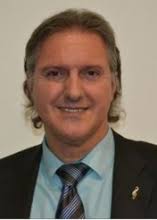 4. Speaker: Sandro Carrara
4. Speaker: Sandro Carrara
Affiliation: EPFL, Switzerland and DL Speaker of IEEE Sensors Council
Bio: Sandro Carrara is an IEEE Fellow for his outstanding record of accomplishments in the field of design of nanoscale biological CMOS sensors. He is also the recipient of the IEEE Sensors Council Technical Achievement Award in 2016 for his leadership in the emerging area of co-design in Bio/Nano/CMOS interfaces. He is a faculty member (MER) at the EPFL in Lausanne (Switzerland). He is former professor of optical and electrical biosensors at the Department of Electrical Engineering and Biophysics (DIBE) of the University of Genoa (Italy) and former professor of nanobiotechnology at the University of Bologna (Italy). He holds a PhD in Biochemistry & Biophysics from University of Padua (Italy), a Master degree in Physics from University of Genoa (Italy), and a diploma in Electronics from National Institute of Technology in Albenga (Italy). His scientific interests are on electrical phenomena of nano-bio-structured films, and include CMOS design of biochips based on proteins and DNA. Along his carrier, he published 7 books, one as author with Springer on Bio/CMOS interfaces and, more recently, a Handbook of Bioelectronics with Cambridge University Press. He also published more than 200 scientific papers and is author of 12 patents. He is now Editor-in-Chief (Associate) of the IEEE Sensors Journal; he is also founder and Editor-in-Chief of the journal BioNanoScience by Springer, and Associate Editor of IEEE Transactions on Biomedical Circuits and Systems. He is a member of the Board of Governors (BoG) of the IEEE Circuits And Systems Society (CASS). He is member at large of the IEEE Sensors Council. He has been appointed as IEEE Sensors Council Distinguished Lecturer for the years 2017-2019, and CASS Distinguished Lecturer for the years 2013-2014. His work received several international recognitions: several Top-25 Hottest-Articles (2004, 2005, 2008, 2009, and two times in 2012) published in highly ranked international journals such as Biosensors and Bioelectronics, Sensors and Actuators B, IEEE Sensors journal, and Thin Solid Films; a NATO Advanced Research Award in 1996 for the original contribution to the physics of single-electron conductivity in nano-particles; three Best Paper Awards at the IEEE PRIME Conference in 2015 (Glasgow), in 2010 (Berlin), and in 2009 (Cork), a Best Poster Award at the Nanotera workshop in 2011 (Bern), and a Best Poster Award at the NanoEurope Symposium in 2009 (Rapperswil). He also received the Best Referees Award from the journal Biosensor and Bioelectronics in 2006. From 1997 to 2000, he was a member of an international committee at the ELETTRA Synchrotron in Trieste. From 2000 to 2003, he was scientific leader of a National Research Program (PNR) in the filed of Nanobiotechnology. He was an internationally esteemed expert of the evaluation panel of the Academy of Finland in a research program for the years 2010-2013. He has been the General Chairman of the Conference IEEE BioCAS 2014, the premier worldwide international conference in the area of circuits and systems for biomedical applications.
Title of the talk: Bio/Nano/CMOS for memristive sensing
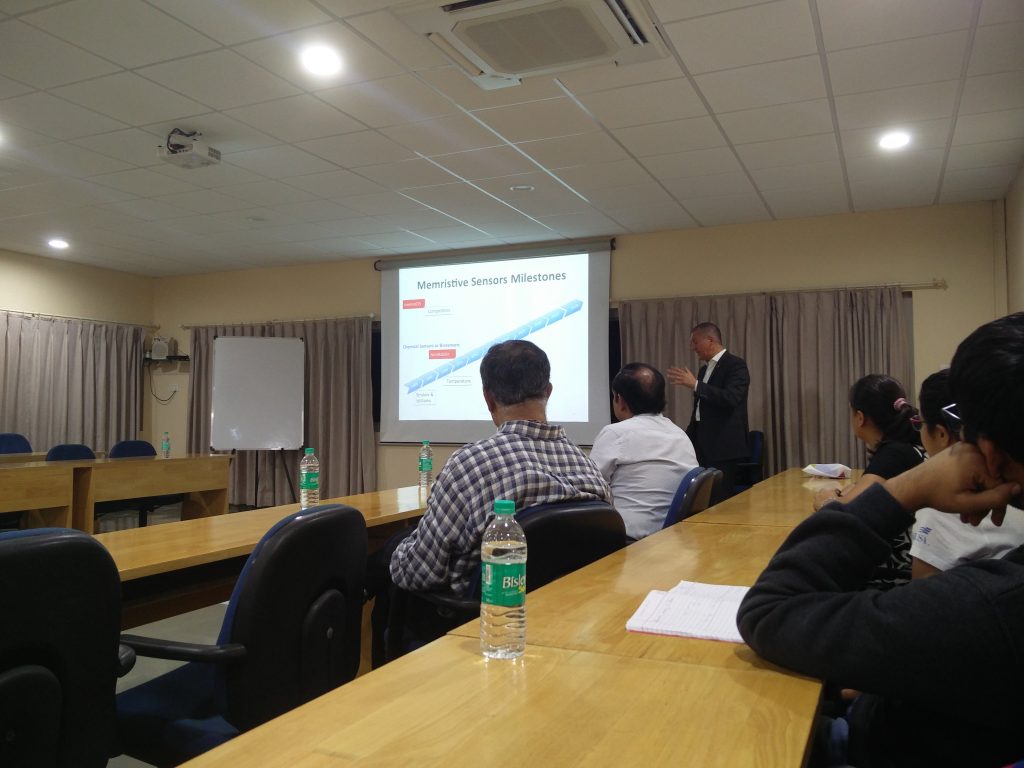 Abstract: In this Distinguished Lecture, the very best worldwide ever-reported electrochemical biosensors based on a memristive effect and aptamers or antibodies are presented. These novel sensing devices are developed to propose a completely new approach in the co-design of Bio/Nano/CMOS interfaces for cancer diagnostics. In this research, affinity-based techniques are presented for the detection of the prostate specific antigen (PSA) and the Vascular Endothelial Growth Factor (VEGF). The hysteretic properties of memristive silicon nanowires functionalized with proper biomolecules provide a label-free and ultrasensitive bio-detection technique. In order to develop full systems for diagnostics, the integration with CMOS frontend, in one side of the interface, and microfluidics, in the other side, is required too. Therefore, this lecture also discusses novel circuit approaches for an automated and quick characterization of arrays of memristive biosensors. One memristive parameter, the width of the voltage gap, is directly proportional to the target molecules concentration. Thus, CMOS readouts acquiring such width, meanwhile sorting-out faulty devices, i.e. nonconducting nanowires in the array, are presented together with analog-to-digital conversion for the acquired voltage gap. A prototype of these circuits is shown as an example of design in 0.35μm CMOS technology. The integration of the CMOS readout with the nanoscale sensors and a microfluidic platform is a must for the design of robust biosensing-systems for quick data acquisition in cancer diagnostics. Therefore, the development of an improved chip-platform for cancer diagnostics based on nanofabricated Memristive Biosensors integrated, for the first time, with a microfluidic structure is also presented in this lecture by also addressing critical issues, e.g., the problems related to long connections between the Memristive Biosensors and the CMOS frontend.
Abstract: In this Distinguished Lecture, the very best worldwide ever-reported electrochemical biosensors based on a memristive effect and aptamers or antibodies are presented. These novel sensing devices are developed to propose a completely new approach in the co-design of Bio/Nano/CMOS interfaces for cancer diagnostics. In this research, affinity-based techniques are presented for the detection of the prostate specific antigen (PSA) and the Vascular Endothelial Growth Factor (VEGF). The hysteretic properties of memristive silicon nanowires functionalized with proper biomolecules provide a label-free and ultrasensitive bio-detection technique. In order to develop full systems for diagnostics, the integration with CMOS frontend, in one side of the interface, and microfluidics, in the other side, is required too. Therefore, this lecture also discusses novel circuit approaches for an automated and quick characterization of arrays of memristive biosensors. One memristive parameter, the width of the voltage gap, is directly proportional to the target molecules concentration. Thus, CMOS readouts acquiring such width, meanwhile sorting-out faulty devices, i.e. nonconducting nanowires in the array, are presented together with analog-to-digital conversion for the acquired voltage gap. A prototype of these circuits is shown as an example of design in 0.35μm CMOS technology. The integration of the CMOS readout with the nanoscale sensors and a microfluidic platform is a must for the design of robust biosensing-systems for quick data acquisition in cancer diagnostics. Therefore, the development of an improved chip-platform for cancer diagnostics based on nanofabricated Memristive Biosensors integrated, for the first time, with a microfluidic structure is also presented in this lecture by also addressing critical issues, e.g., the problems related to long connections between the Memristive Biosensors and the CMOS frontend.
Date: 2 Nov, 2018
Venue: DA-IICT, Gandhinagar
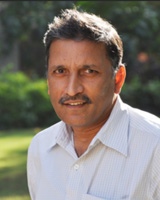 5. Speaker: Anil K Roy
5. Speaker: Anil K Roy
Affiliation: DA-IICT, Gandhinagar
Bio: Dr. Anil Roy, a faculty of DA-IICT, Gandhinagar is an alumnus of IIT Delhi and IIT Roorkee. He worked at Centre for Theoretical Studies at Indian Institute of Science, Bangalore during 1993-94 followed by the Optical Fiber group at IIT Delhi till 1996. His main academic interest areas are sensors, image processing, fiber optics, semiconductor physics, applications of technologies for humanitarian challenges. He is a senior member of IEEE. He is actively associated with IEEE’s initiative on IoT and Smart City and an AdCom member of IEEE Sensors Council. He has been involved in various efforts of spreading awareness about cyber security among students, parents and professionals as well. Dr. Roy was the General Chair of IEEE INDICON 2009, was the General co-Chair of the IEEE Conference on Technologies for Humanitarian Challenges 2009 & IEEE R10 International Spring Conference, TenSymp 2015. He was the Publications co-Chair of International Symposium for Circuits and Systems (ISCAS) 2017. He is the General co-Chair of IEEE SENSORS 2018 which is being held during 28-31 Oct, 2018 in Delhi. Dr. Roy is the recipient of 2017 IEEE Sensors Council Meritorious Service Award, 2012 IEEE MGA Leadership Award, 2010 IEEE Region 10 Outstanding Volunteer Award, and 2007 IEEE Region 10 Outstanding Counselor Award. Dr. Roy is also a member of Optical Society of America. He is engaged with IEEE Standards Association to prepare a white paper on Smart City.
Title of the talk: Welcome to the World of Disruptive Technologies
Date: 18 Sep 2018
Venue: GCET, New Vallabh Vidyanagar Campus, Anand, Gujarat
6. Speaker: Anil K Roy
Affiliation: DA-IICT, Gandhinagar
Title of the talk: The Paradigm of Borderless Technologies: Let’s understand it …
Date: 31 July 2018
Venue: Govt. Engineering College, Sector 28, Gandhinagar, Gujarat
7. Speaker: Anil K Roy
Affiliation: DA-IICT, Gandhinagar
Title of the talk: Disruptive Technologies: Tighten Your Seatbelt
Date: 16 May 2018
Venue: Space Applications Centre (SAC-ISRO), Ahmedabad, Gujarat
8. Speaker: Anil K. Roy
Title of the talk: IoT and 5G – Who is Driving Whom?
Abstract: Discussion of IoT without 5G technology is an oxymoron. And provision of 5G without IoT like applications is an overkill. Selling IoT applications without 5G is like driving a Ferrari on a footpath. The convergence of computer and communication technologies gave birth to many new and spectacular killer applications. It gave rise to compensating scarcity of spectrum by enhancing bandwidth, speed, and channel in the network. In the current state-of-the art packet switching and circuit switching have been overwhelmed by congnitive radio and software defined radio. Now the technological revolution has evolved from radio wave to microwave to now mm wave. And this made it possible that H2H communication will now be taken over by M2M communication. Alexas and Sophias may take the driving seat in the future of civilization.
Date: 24 Oct, 2018
Venue: Madan Mohan Malviya Technology University, Gorakhpur, UP
9. Speaker: Prof. Ravinder Dahiya
Title of the talk: Distinguished Lecture on 3D-printing: From Single Material to Multi Material Printing
Abstract: During the last several years, 3D printing has been receiving significant attention in academia and has also generated business interests. To many, 3D printing is a transformative technology capable of impacting many areas of experimental Science, of Engineering, of Medicine, development of robotic hands, tissue engineering and personalized (i.e., one-of-a-kind) items for the emerging Industry 4.0 etc. So far, the 3D printing technology has been focused on printing of single material (i.e. either plastic or metal). Recently there has been some progress towards multi-material 3D printing i.e. printing conductive material and plastic simultaneously. This lecture will cover various aspects related to basis 3D printing technology as well as the new developments such as multi-material 3D printing.
Date: 13 Dec 2019
Venue: Auditorium hall, Marwadi university, Rajkot
Industrial Visit
We conducted industrial visits for the students jointly with the IAS Student Branch Chapter of DA-IICT.
1. Akshay Patra Foundation visit
Date: 27 Oct, 2018
Visit report: We organized a visit to Akshaya Patra Foundation on 27th October 2018. It is a non-profit organisation in India that runs school lunch programme across India. Akshaya Patra was established in 2000. It has its kitchens in Andhra Pradesh, Gujarat, Karnataka, Chattisgarh and many places in India. It has its largest kitchen in Bangalore and the second largest in Ahmedabad.
The kitchen starts functioning from around 5.30 am everyday. With an aim to learn about the automatic cooking process of mass production, we reached there around 5.30 am. We were warmly welcomed by the officials of Akshaya Patra Foundation. They gave us brief information about their organisation, their aim and how they have been constantly striving to achieve it. The tour was about to start before which we were given shoe and hair covers to wear before entering the area.
The kitchen is structured in such a way to exploit the force of gravity. It has 3 floors. On the top floor the rice, dal and vegetables are washed and and then through a channel it is passed to the second floor where they are cooked in huge capacity drums. All the spices used in the cooking vegetables and dal is also poured from above.
All the machines and vessels that they use are designed and manufactured in India. On the second floor, they also have the machine to make idlis for breakfast and a bakery where they bake biscuits, cookies and cupcakes for the children. None of the items baked is made using white flour but only wheat flour in order to maintain the nutrients. From the second floor, the cooked rice, dal and vegetables would come to the ground floor through the channels.
On the ground floor, rice and dal would be finally be ready and would be filled in the packaging containers. They own a flour kneading machine from which the kneaded flour is transferred to a machine after which it is pressed and a sheet of the flour is made. It is followed by making circular cuts for rotis and then the sheet is passed over the flame to roast. The rotis are then roasted on the other surface. Finally, it is sprayed with oil and collected.
The food items which are ready are then packed in containers and then transferred to trucks for dispatch. The temperature of the food is maintained such that the children can have it at around 62 degree Celsius. Also, the nutrition value of the food is strictly taken care of. As students from technical field, it was an incredible experience to watch a simple a process like cooking being carried out in such an inconceivably massive scale with full automation. They have truly exploited the boons of technology for such a noble cause. Following the kitchen tour, we got a chance to explore the huge campus early during sunrise. It was a great experience visiting Akshaya Patra Foundation. Everyone was grateful for this opportunity to know how the world’s largest NGO-Run Mid-Day Meal programme is carried out.
2. GIFT City visit
Date: 15 June 2018
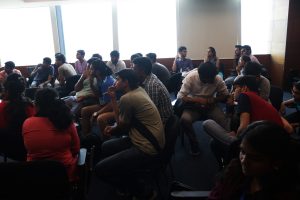 Visit report: The enthusiastic participation coupled with expert speakers and a breathtaking view made the day memorable. The venue was a conference room on the 28th floor of Gift One, Gujarat’s tallest building with a picturesque cityscape. The day began with talk by founder Chairperson of IEEE IAS DA-IICT Student Branch Chapter, Ms. Megha Tak who briefed about the establishment of IAS chapter in DA-IICT in 2012 and the help and courage received from various faculties and fellow students. Neelanshi Varia, the chairperson of IEEE IAS SB DA-IICT introduced all the participants with motto and activities carried out in the past. Dr. Anil Roy, the current chapter advisor of IEEE IAS Student Branch Chapter at DA-IICT enlightened all the participants about IEEE and IAS community by giving a brief overview of the history, purpose and development of IEEE society.
Visit report: The enthusiastic participation coupled with expert speakers and a breathtaking view made the day memorable. The venue was a conference room on the 28th floor of Gift One, Gujarat’s tallest building with a picturesque cityscape. The day began with talk by founder Chairperson of IEEE IAS DA-IICT Student Branch Chapter, Ms. Megha Tak who briefed about the establishment of IAS chapter in DA-IICT in 2012 and the help and courage received from various faculties and fellow students. Neelanshi Varia, the chairperson of IEEE IAS SB DA-IICT introduced all the participants with motto and activities carried out in the past. Dr. Anil Roy, the current chapter advisor of IEEE IAS Student Branch Chapter at DA-IICT enlightened all the participants about IEEE and IAS community by giving a brief overview of the history, purpose and development of IEEE society.
Highly accomplished speaker, Dr. Anita Basalingappa, interested everyone with a fantastic talk on market demands, management and importance of branding. Putting up the slogan “Familiarity builds Confidence” she convinced every participant of the importance of brands. Dr. Basalingappa is the professor of Marketing in MICA, Ahmedabad.
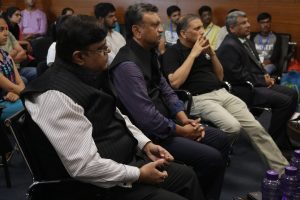 Mr. Braj Bhushan Mishra, General Manager and the head of Engineering and Fleet Management at GE India Ltd., gave an extraordinary talk on the recent innovations and technologies implemented at ALSTOM Projects and gave a great insight into the importance and the fruitful consequences of a person’s innovations.
Mr. Braj Bhushan Mishra, General Manager and the head of Engineering and Fleet Management at GE India Ltd., gave an extraordinary talk on the recent innovations and technologies implemented at ALSTOM Projects and gave a great insight into the importance and the fruitful consequences of a person’s innovations.
Mr. Sanjeev Agarwal and Mr. Alok Hurra, co-owners at Brainbow Academy of Multiple Intelligence, introduced with scientific proofs, a relatively unknown branch of multiple intelligence, dissecting a person’s thoughts and interests with just his fingerprints. They ran us through the science underlying it and explained how their academy has highly succeeded in showing people their correct interest and how they can avoid stress and tensions by following their right, built-in skill.
The speaker session ended with a very active interaction session and felicitation to all the speakers. This was followed by a tour of the GIFT City, where the city’s technological advancement was explained with the city’s modern technologies like automated drainage system, automated waste collection system were intricately explained. Mr. Dhyan Trivedi, alongwith the HR Head at GIFT City guided us through the whole tour.
At the end, all the participants were gifted bluetooth speakers as memento. Enthralling conversations, fruitful networking, beautiful views and entertaining speeches along with an enlightening tour of the smart city made the event a successful one.
Workshop
Topic: Innovative Design using 3D Printer
Date: 9 & 10 Sep 2017

Winter School 2021
-
- Dates: Feb 6-7, 2021 (Saturday, Sunday)
- Format: Online
- Theme: Wearable Sensors and DevicesFollowing talks were delivered:
- 6 February 2021
- Rudra Pratap (IISc, Bangalore, India)
Topic: “Discovering Templates of Engineering Design Hidden in Nature’s Transducers” - Subhas Chandra Mukhopadhyay (Macquarie University, Sydney, Australia)
Topic: “From sensors to computing, Trends for Wearable and Medical Devices” - Chandan Sethi (Founder & CEO, innoWear, Hong Kong)
Topic: “Can Wearables Predict Health Risks Like COVID-19?” - Indira Negi (Vice President, AliveCor, USA)
Topic: “A Health Product or a Brilliant Gadget?”
- Rudra Pratap (IISc, Bangalore, India)
- 7 February 2021
- Behraad Bahreyni (Simon Fraser University, Canada)
Topic: “Smart Textile” - Jürgen Kosel (King Abdullah University of Science and Technology, Saudi Arabia)
Topic: “Wearable Printed Graphene Sensors” - Rahul Todi (International Product Marketing Manager, Dialog Semiconductors, The Netherlands)
Topic: “Key Priorities for Powering Wearables” - Ravinder Dahiya (University of Glasgow, Scotland)
Topic: “Tactile Skin in Robotics and Medical Applications” - Veena Misra (North Carolina State University, Raleigh, NC, USA)
Topic: “Self-Powered Wearable Sensors for Health and Environmental Monitoring”
- Behraad Bahreyni (Simon Fraser University, Canada)
-
There was a Quiz on Wearables and Sensors during Valedictory Session.The event was attended by 152 delegates, 10 speakers and 7 volunteer students.


